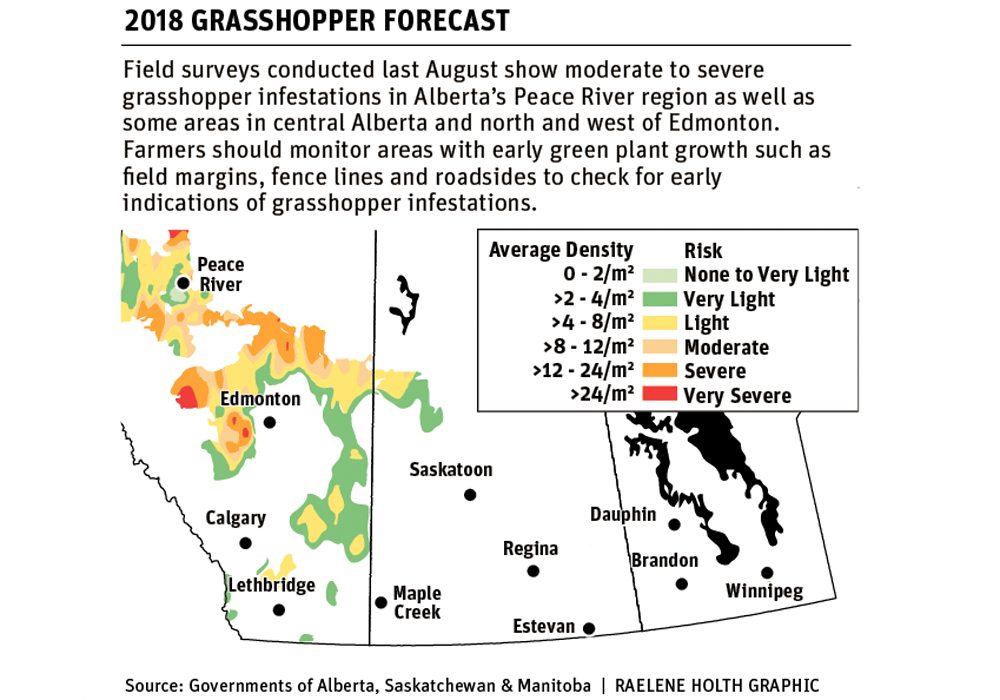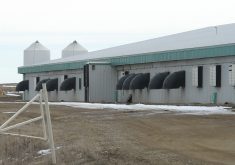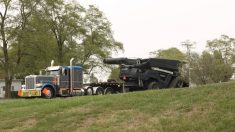Farmers are all too familiar with the insects that harm their crops — miniature yield-robbers like the cabbage seedpod weevil, diamondback moth, bertha armyworm, wheat stem sawfly, orange blossom wheat midge and pea leaf weevil.
But with so many balls in the air, today’s busy producers sometimes lack the resources to scout their crops in a thorough manner, or fail to complete the task when the timing is most critical.
To those ends, the Prairie Pest Monitoring Network (PPMN) was developed.
The network provides important information to growers and takes much of the effort and guess work out of the time-consuming job of scouting and monitoring fields.
Read Also

Phosphate prices to remain high
Phosphate prices are expected to remain elevated, according to Mosaic’s president.
The PPMN is a prairie-wide monitoring system that predicts insect risks, monitors insect populations and offers advice to growers on how to check for pests, when to scout and when chemical controls are warranted.
Jennifer Otani, an Agriculture Canada pest management biologist based at Beaverlodge, Alta., said the PPMN was developed 21 years ago after insect researchers at western Canadian universities, provincial agriculture departments and Agriculture Canada identified the need for a more co-ordinated approach in monitoring insect populations and conducting entomological research.
“The network has been really important in that its brought together all of these researchers from different areas who have different perspectives but who ultimately are working to protect field crops from insect pests,” said Otani.
“Because some of these pest issues are Prairie-wide, it makes sense to have a prairie-wide perspective, so in that sense, the network has also been really integral to the development of research projects and priority setting …”
The PPMN was established in 1996.
At the time, the number of entomologists involved in monitoring insect pests was declining and monitoring programs were being operated on a province-by-province basis, with limited cross-border co-ordination.
Monitoring protocols for different insects also varied from one province to the next.
According to Owen Olfert, an Agriculture Canada research scientist who helped to establish and design the network, the need for a more co-ordinated approach was obvious.
“We wanted to expand the scope of the monitoring and forecasting programs to cover the entire prairie region so this meant that we had to go beyond provincial borders because, obviously, insects don’t pay any attention to provincial boundaries,” Olfert said in a recent interview.
“With the network in place, we are also able to keep up with some of the new invasive alien insect species that are showing up ….”
Today, the PPMN performs several core functions.
It monitors for populations of existing and emerging insects including:
- indigenous insects such as grasshoppers, bertha armyworms and wheat stem sawflies;
- invasive alien species such as the cabbage seedpod weevil, pea leaf weevil, wheat midge and swede midge, and;
- migratory pests such as the diamondback moth.
The network also produces annual insect risk maps and forecast maps, which are distributed by provincial agriculture departments and used by growers across Western Canada.
Weekly status updates are also prepared during the growing season.
The network’s maps and up-dates can be viewed on-line at http://prairiepestmonitoring.blogspot.ca/.
Maps are contained in a portable document file under a tab labelled risk maps.
Growers can subscribe to PPMN weekly updates free of charge to receive weekly updates, via email.
The updates alert growers to risks for major pests, offer tips on scouting methods and provide advice on when in-field scouting activities should be conducted.
Otani said it’s important for growers to understand the difference between forecast maps and risk maps.
Forecast maps project forward and assess the risks posed by certain insect pests for the upcoming growing season.
PPMN prepares forecast maps for grasshoppers and wheat midge, based on a variety of factors including insect densities, cocoon numbers, parasitism levels and insect distributions observed the previous year.
“Forecasting is very important because it helps us to assess the level of risk going forward,” she said.
“Growers … need to have some sense of what they might be dealing with during the growing season.”
Risk maps are different. They do not project forward but look backward at historical data, most notably pest populations and distributions from previous years.
Risk maps can provide important information that assists growers with important pest management decisions.
Information produced by the PPMN should always be augmented by thorough in-field scouting programs on the farm.
“Ultimately, what we’re really hoping is that growers are … making sound decisions that have good data behind them,” Otani said.

















